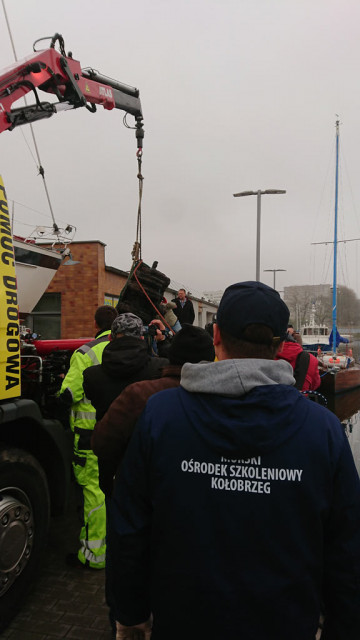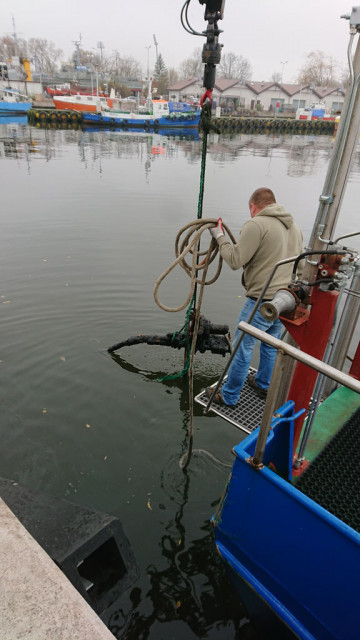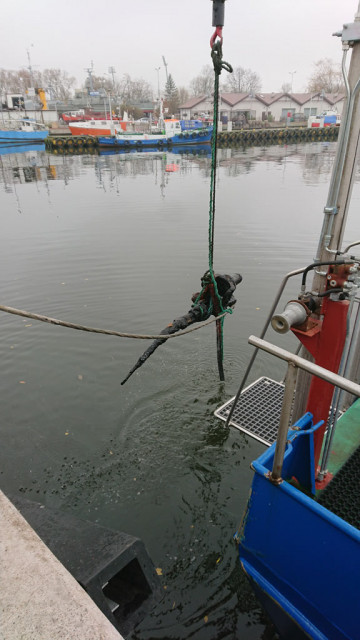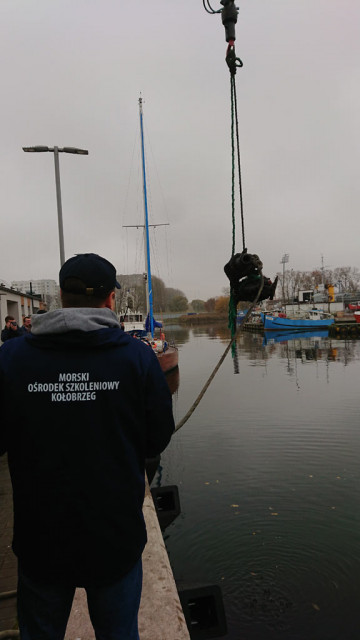German Oerlikon anti-aircraft gun on a naval mounting was pulled out of the water as a part of the Wracks of Kołobrzeg project of the Museum of Polish Arms in an action carried out together with the project partners.
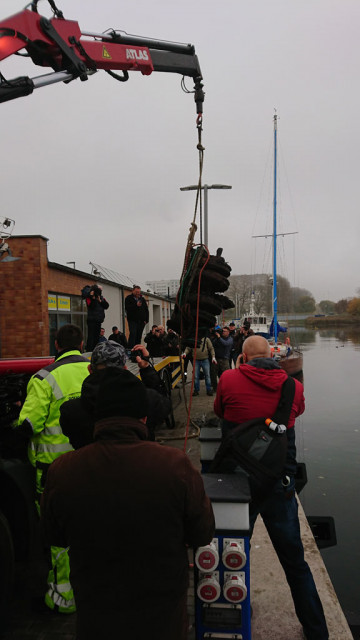
The (machine) gun was designed in 1914 by Reinhold Becker. The estimated weight of the gun and the mounting is ca. 550 kg. It was widely used during the First and the Second World War. It was used in a modified form for a long time - e.g. Americans installed it on river monitors during the war in Vietnam. It is also being used today and is popular with the naval forces of the Border Guards of many countries.
Unique wartime discovery
In the Maritime Open-air Museum in Kołobrzeg, there is an Oerlikon gun mounting marked “2 cm Flak 29” with number 1908, which was found last year.
According to Aleksander Ostasz - the director of the Museum of Polish Arms in Kołobrzeg and the expert of the Ministry of Culture and National Heritage:
- The German wreck, which sank in 1945 in the area of Kołobrzeg has provided the museum with many interesting exhibits. We have already found e.g. a Polish cannon from September 1939 and now the German gun; we may risk saying that we have found “a cannon of the independent country” and, thus, the Museum of Polish Arms in Kołobrzeg inaugurated the celebrations of the 100th anniversary of Polish independence in an original way - added the director.
Historical maritime items wanted
Director Aleksander Ostasz has also called for cooperation and assistance in rescuing the memorabilia of those who created the broadly understood maritime economy in Poland. - We’re also looking for forgotten or unwanted historical maritime technology items - he adds. - We’re interested in old equipment, photos, documents. The idea behind the action is rescuing of the largest possible number of historical maritime technology items - he emphasises.
The Wrecks of Kołobrzeg project is held under the auspices of the Minister of Maritime Economy and Inland Navigation Marek Gróbarczyk and the Kołobrzeski District Governor Tomasz Tamborski.
The underwater research and the 9th November action were possible thanks to e.g. the involvement of the Maritime Training Centre of the Maritime University of Szczecin in Kołobrzeg, to which the organisers of the action have sent their special thanks.

